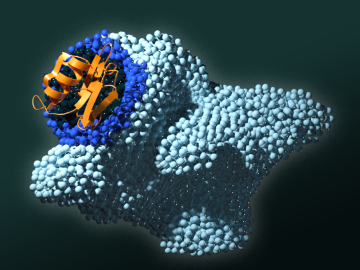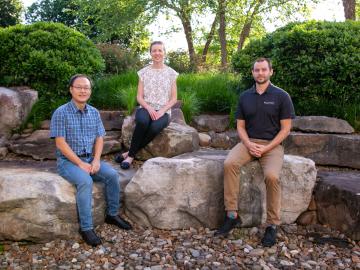
Filter News
Area of Research
- (-) Biology and Environment (52)
- (-) Fusion and Fission (15)
- Advanced Manufacturing (2)
- Biology and Soft Matter (1)
- Building Technologies (2)
- Clean Energy (49)
- Computational Biology (1)
- Computer Science (1)
- Electricity and Smart Grid (1)
- Functional Materials for Energy (2)
- Isotopes (3)
- Materials (43)
- Materials for Computing (6)
- National Security (25)
- Neutron Science (14)
- Renewable Energy (1)
- Supercomputing (39)
News Topics
- 3-D Printing/Advanced Manufacturing (3)
- Advanced Reactors (2)
- Artificial Intelligence (3)
- Big Data (1)
- Bioenergy (15)
- Biology (26)
- Biomedical (2)
- Biotechnology (3)
- Buildings (1)
- Chemical Sciences (6)
- Clean Water (2)
- Climate Change (16)
- Composites (2)
- Computer Science (4)
- Coronavirus (2)
- Critical Materials (1)
- Cybersecurity (1)
- Decarbonization (9)
- Energy Storage (6)
- Environment (25)
- Exascale Computing (1)
- Fossil Energy (1)
- Frontier (1)
- Fusion (6)
- Grid (3)
- High-Performance Computing (4)
- Hydropower (5)
- ITER (2)
- Machine Learning (3)
- Materials (4)
- Materials Science (4)
- Mercury (1)
- Microscopy (6)
- Nanotechnology (2)
- National Security (1)
- Net Zero (1)
- Neutron Science (1)
- Nuclear Energy (9)
- Partnerships (4)
- Physics (1)
- Polymers (1)
- Security (2)
- Simulation (1)
- Space Exploration (1)
- Summit (2)
- Sustainable Energy (12)
- Transformational Challenge Reactor (1)
- Transportation (2)
Media Contacts
Scientists at Oak Ridge National Laboratory are closer to unlocking the secrets to better soil carbon sequestration by studying the tiny, sand-like silicon deposits called phytoliths in plants.

Science has taken Melanie Mayes from Tennessee to the tropics, studying some of the most important ecosystems in the world.

Researchers at ORNL have definitively linked the function of a specific domain of proteins important in plant-microbe biology to a cancer trigger in humans, knowledge that had eluded scientists for decades.

Steven Arndt, distinguished R&D staff member in the Nuclear Energy and Fuel Cycle Division at ORNL, began a one-year term on June 16 as the 68th President of the American Nuclear Society.

As the United States moves toward more sustainable and renewable sources of energy, hydropower is expected to play a pivotal role in integrating more intermittent renewables like wind and solar to the electricity grid

Microorganisms may provide hope that peatlands can withstand hotter temperatures in a changing climate.

The Department of Energy’s Office of Science has selected three Oak Ridge National Laboratory scientists for Early Career Research Program awards.

The Atmospheric Radiation Measurement Data Center is shepherding changes to its operations to make the treasure trove of data more easily available accessible and useful to scientists studying Earth’s climate.

To optimize biomaterials for reliable, cost-effective paper production, building construction, and biofuel development, researchers often study the structure of plant cells using techniques such as freezing plant samples or placing them in a vacuum.

Practical fusion energy is not just a dream at ORNL. Experts in fusion and material science are working together to develop solutions that will make a fusion pilot plant — and ultimately carbon-free, abundant fusion electricity — possible.


